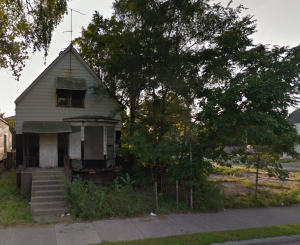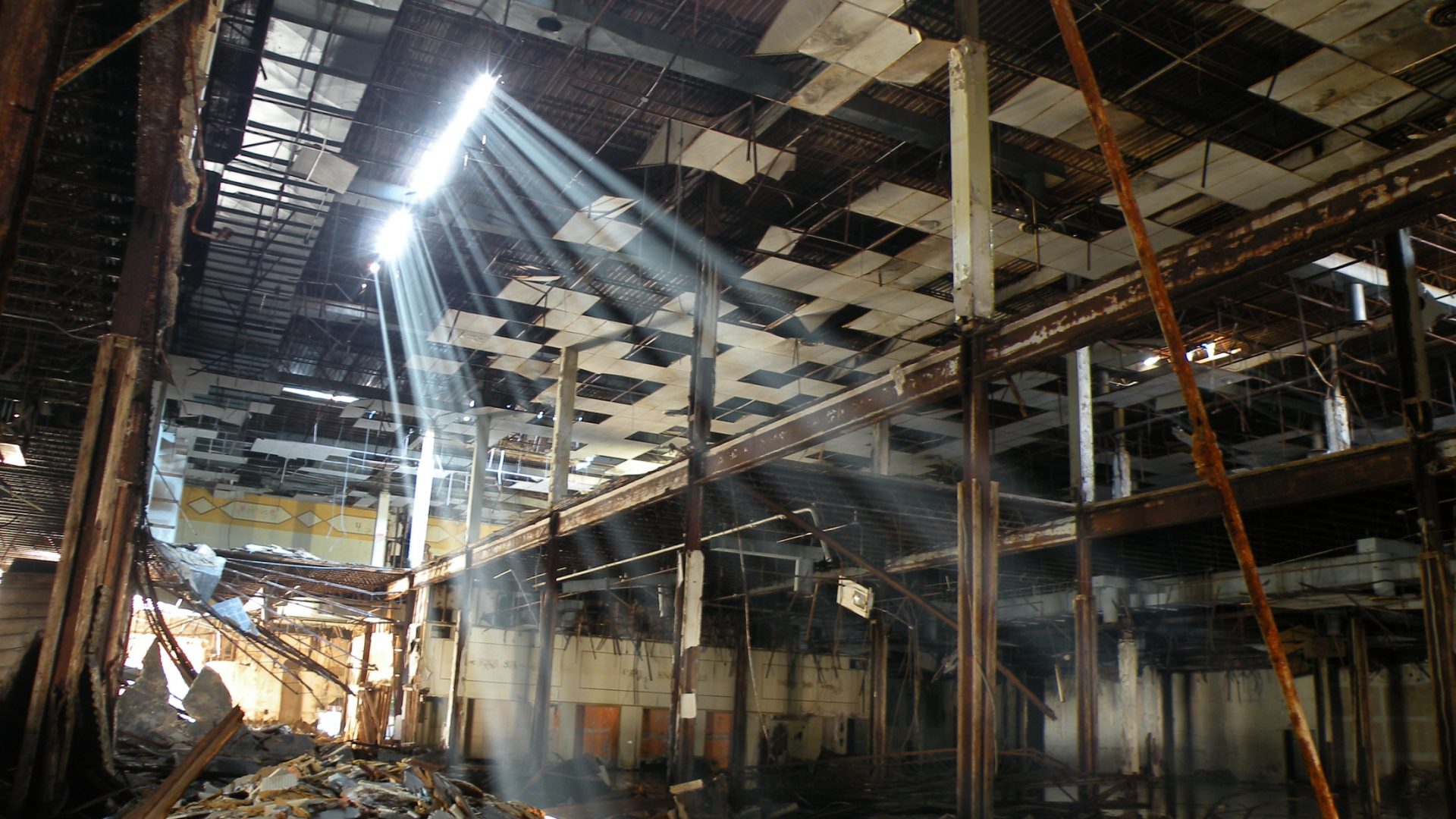| Origins | Annexed in 1889 |
|---|---|
| Area | Southwest Side |
| Boundaries | Garfield Boulevard on the north, railroad tracks near 75th Street on the south, Racine Avenue on the east, Western Avenue on the west |
| Gangs headquartered | Gangster Disciples, Black P Stones, Black Disciples, Conservative Vice Lords, New Breeds, |
This area was first settled right after the Illinois & Michigan Canal construction was finished in 1848 as German and Swedish farmers came to this area of swamps and Oak trees. In the year 1850 this area became a part of Lake Township.
In the year 1852 the German and Swedish were joined by Irish and more German immigrants that settled here because the railroad lines were completed as they became railroad workers, and the area became known as “Junction Grove.”
In the year 1865 this area was annexed in to the town of “Lake” and experienced more migration from Irish and German workers when the Union Stock Yards opened in the town of Lake. The area was named after Henry B. Lewis after Englewood New Jersey.
After the Great Chicago Fire of 1871 many Chicagoans settled here to create “West Englewood” which started out as a subdivision of Englewood but evolved into its own community especially by the time of annexation into Chicago in 1889. It was also in the year 1885 that a very small settlement of 26 African Americans settled by where 63rd and Loomis Boulevard currently is. The area near Ogden Park was an Underground Railroad stop in the slavery days making this area known to African Americans. This area from Racine to Loomis was the first black settlement of the Englewood area.
After annexation public transportation was created along with roads being paved, this brought easier commuting for residents to other communities and soon the population increased and several more homes were built.
In the 1920s the area boomed as Italian immigrants settled in this neighborhood and a transit bus barn opened at the intersection of 74th Street and Ashland Avenue in the 1920s that provided many jobs. There was also a massive strip of retail businesses that stretched down Ashland Avenue from 63rd Street to 75th Street which provided employment and generated revenue for the community.
This neighborhood did not suffer badly during the Great Depression years of the 1930s and African Americans settled in the community slowly in the 1930s, 1940s and 1950s. The settlement of blacks was slow and there was no shock and disinvestment to the community like there was in neighboring Englewood.
This neighborhood was still prospering by the 1950s decade; however, Italian greaser gangs formed in this neighborhood to battle blacks from Englewood, and greaser clubs from the Back of The Yards and Marquette Park. The greaser clubs and other groups of white adults worked to keep blacks out of their sections of West Englewood in a form of discriminatory living.



By the years 1964 African Americans began living all over the neighborhood and not just in the central east section by 63rd and Loomis to Racine, this brought about racial tensions but most of all it resulted in white flight which brought the neighborhood to become 48% African American by 1970. The 1960s was a time of heavy racial strife in West Englewood and even Neo Nazi groups came to this neighborhood from Marquette Park to engage in measures to keep blacks out.
As black residents were now moving all over the West Englewood community and racial tensions were growing the Devil’s Disciples migrated from other Chicago communities. The Disciples were especially strong in this community as they came from neighboring Englewood. The Devil’s Disciples became the biggest gang in the neighborhood far surpassing the numbers of the various white greaser gangs on these streets. The Disciples came alongside a massive Disciple settlement campaign into several south side Chicago neighborhoods in the year 1964.
In the year 1966, the Black P Stones arrived on these streets settling the northern part of the community near Garfield Boulevard (55th). This street was the border between the changing West Englewood community and the white Back of the Yards community. Many white residents of Back of the Yards that lived near Garfield Boulevard frequented many West Englewood establishments especially the youth. Many newly arrived black residents wanted to take up recreation in Sherman Park and other areas in the Back of the Yards community and this brought a racial clash among the youth over public amenities. the Black P Stones were now perceived as the largest threat in this area along Garfield Boulevard. The Gaylords street gang formed in Sherman Park at Garfield and Ashland with the Black P Stones as one of their biggest enemies. Gaylords and other groups fought with Disciples as well, but the war was not as intense as with the newly arrived Black P Stones. At one point the Gaylords even considered a peace treaty with the Devil’s Disciples so they could team up against the Stones, but Disciples weren’t having it. Many Gaylord members lived in West Englewood and resented the Stones for moving on their blocks. Stones and Disciples also began a vicious gang war in 1966 after Stones settled here.
Many of these white youths attaching themselves the greaser gangs in the later 60s and earlier 70s could not afford the privilege of white flight because they were just as impoverished as black youths; therefore, many of these white youths felt they needed to fight for their streets and try to prevent black migration as much as possible.
In the mid-1970s years of 1974 to 1976 Nazi leader Frank Collin gathered up his Nazis that operated at the headquarters in nearby Marquette Park and they tore through the streets of West Englewood seeking out blacks and violently beating them and terrorizing their homes, in response groups of blacks attacked white residential areas in the neighborhood which sparked a racial war. Black P Stones and Black Gangster Disciples were clashing with the Nazis and the Italian greaser gangs of the neighborhood this was the beginning of major gang problems in the neighborhood. In 1976, the white gangs broke up and this stopped the racial conflicts. Groups like the Gaylords stayed in the Back of the Yards confines and were a lot less active. The main war was now between Stones and Disciples.
In the year 1979 when the El Rukns announced their sanctions on the Black P Stones, many Stones flipped to Conservative Vice Lords on the south side and West Englewood was a major site of this flipping and this is how Conservative Vice Lords have had such a strong influence over West Englewood that lasts into present decades.
In the year 1981 when the Black Gangster Disciple nation went defunct and most of the nation became Black Gangster Disciples and the rest became Black Disciples, West Englewood was the site of a good portion of Disciples choosing the Black Disciples gang. The majority of West Englewood Disciples chose to become Black Gangster Disciples but a large group chose Black Disciples, making West Englewood one of the BDs most historic neighborhoods.
By 1980 almost all white residents had fled West Englewood as the community was now 98% African American. West Englewood became as hard up as Englewood in the 1980s and later as drugs, gangs and violent crime took over the community. The buildings and homes have fallen into a severe state of deterioration and this neighborhood has had an extremely high rate of poverty. Much of the commercial strip on Ashland has closed and the bus barn on 74th closed down taking away many jobs.
West Englewood had also fallen into heavy urban blight just like neighboring Englewood. Disinvestment and redlining became major issues in this neighborhood that led to many of these socioeconomic problems. Many deteriorated buildings were torn down into vacant lots in the 1980s; however, there has not been much more urban renewal plans or economic relief programs.
West Englewood has been considered one of the most violent and dangerous neighborhoods in Chicago and often is considered to be one of the top 10 most violent and many times one of the top 3 most violent since the 1970s.
West Englewood is one of the most blighted neighborhoods in Chicago as most blocks have several abandoned homes, some homes and buildings have been vacant for several decades and suffer extreme deterioration. The area south of 71st Street down to 75th is a more well-kept area of West Englewood that has a stronger community watch and far less abandoned homes, if any are abandoned the dwelling has not been abandoned long. This is where many black middle-classes live, and this area has a higher rate of home ownership. The far northern part of the neighborhood north of 59th Street is also not severely blighted with less shuttered homes and buildings as many black middle-class homeowners reside here as well. The hardest area is between 59th Street and 71st Street.
In the 1960s Devil’s Disciples and Black P Stones dominated this neighborhood.
In the 1970s West Englewood was dominated by Black Gangster Disciples and Black P Stones
In the 1980s up to present years West Englewood is heavily dominated by the Gangster Disciples while Black Disciples, Black P Stones and Conservative Vice Lords have a large presence.
This is the list of significant gangs that have dominated West Englewood over the years:
Black P Stones Established 1966-present years
55th to 58th, Hermitage to Paulina (Art Gang Moe Town) Established 1966-present years
59th to 61st, Wolcott to Wood (9 Block)
57th & Justine
69th & Laflin
Black Disciples Established as Devil’s Disciples 1964-present years
67th to 69th, Hamilton to Hoyne (6 Ward BGC LowBlock)
59th & Elizabeth
59th & Hermitage
65th & Wood
69th & Marshfield
71st & Racine (The Valley)
57th from Racine to Elizabeth (BD Ave)
63rd & Hamilton (Dark Side)
71st & Paulina
71st & Parnell
Mickey Cobras
62nd & Damen
71st & Hermitage
58th & Honore
Gangster Disciples Established as Devil’s Disciples 1964, Established as Supreme Gangsters 1968-present years
56th & Marshfield
63rd & Ashland (Outlaws)
69th & Western
Winchester from 56th to 58th (WBMT Titus Gang)
55th to 57th, Laflin to Bishop (Flinboyz)
61st to 63rd, Marshfield to Ashland (Madville, formerly known as Outlaws)
59th to 60th, Ashland to Justine (Wild9 Dumpstreet Nate Block)
Laflin from 61st to 63rd (L Block)
61st to 63rd, Ada to Racine (Taco Gang, formerly knowns as Corleones)
63rd to 65th, Hamilton to Damen (Nuneworld ETS)
Wolcott from 63rd to 65th (Dipset 6040)
64th to 65th, Wood to Paulina (D Ville Low Block)
66th to 67th, Ashland to Laflin (Ward Life Low Block)
63rd to 65th, Laflin to Loomis (Willieville WVG)
67th to 70th, Damen to Winchester (Josh Block, formerly Buck Town)
69th to 70th, Damen to Hamilton (Chunky City)
69th to 71st, Paulina to Ashland (Crash Town)
67th to 68th, Ada to Throop (D Town)
68th to 69th, Ada to Throop (TSG)
67th to 69th, Elizabeth to Racine (E Town, formerly Murder Town)
70th to 71st, Ada to Elizabeth (T Luv)
71st to 72nd, Hoyne to Damen (SDub City Frankworld)
72nd to 73rd, Marshfield to Ashland (3rd Gang TGC Red Tape)
73rd to 74th, Loomis to Ada (Skeeze Gang)
57th & Paulina
59th & Hermitage (Hermitage Park)
59th & Ashland
63rd & Paulina
69th & Ashland (Trig Ward)
New Breeds Established 1992-present years
67th to 68th, Wood to Wolcott (WNB) Established 1992-present years
Conservative Vice Lords Established 1979-present years
55th to 58th, Hamilton to Damen (Lordsville/Chrisville)
Winchester from 59th to 60th (June Town/J-Town)
71st & Winchester
74th & Racine
63rd & Wolcott
All images below are of vacant buildings at the time of the photo. All images are courtesy of Google Maps

































































































































































